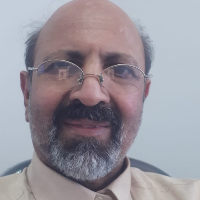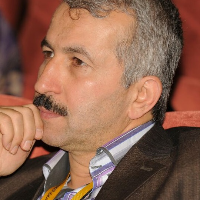Development of an Educational Program for Patients with Multiple Sclerosis in Iran
This study aims to develop an educational program for patients with multiple sclerosis (MS) in Iran which is applicable by physiotherapists.
This is a survey study. Participants were 85 physiotherapists with at least one year of experience working with MS patients in Iran who were randomly selected. The tool was a researcher-made questionnaire with 61 items and four subscales based on the Tyler model, whose content validity was confirmed by 10 experts. The collected data were analyzed using descriptive statistics (frequency and percentage) and inferential statistics (Friedman test) in SPSS software, version 22.
Preventing the patient from getting stuck”, “improving the life quality and life expectancy and preventing depression”, “maximum individual independence in activities of daily living”, “educating the patients and their families how to control mental problems”, “emphasis on drug therapy and physiotherapy”, “preventing deterioration”, “educating how to control musculoskeletal injuries, improve musculoskeletal function, and prevent contracture”, “maintaining the patient’s morale, especially during the relapse period”, “muscle strength and endurance training, and coordination of the muscles and body balance”, and “returning to normal life” were the most important components related to objectives of the educational program for MS patients. “Educating appropriate exercises”, “educating the family members how to lower the patients’ stress”, “having light-intensity exercise”, and “using the successful experiences of other patients with MS and asking them to present it” were the most important components related to the content of the educational program. “In-person training”, “group training”, “treatment in a private center”, “group training in the MS Association”,” watching a movie where one of the characters has MS and showing his/her success to give hope” and “counseling with the family” were the most important components related to the method of education. Finally, “qualitative evaluation and reporting of patient function”, “quantitative assessment of paraments such as range of motion/muscle strength, balance with eyes closed/open, and single-leg stance”, “functionality of the patient”, and “using standard tests” were the most important components related to the program evaluation.
The developed educational program can be used directly by physiotherapists or by all people who are in contact with patients with MS in Iran.
-
Designing and validation of teachers’ tacit knowledge disclosure and sharing model to improve their professional competencies
Adel Zafarinjad *, Alireza Sadeghi, Hassan Malaki, Nematollah Musapoor, Mahbobeh Khosravi
Quarterly Journal of New Thoughts on Education, -
Designing Professional Support Model for New Teachers: A Grounded Theory
Ehsan Zarei *, Hosein Zainalipour, , Abdolvahab Samavi
Journal of Curriculum Studies, -
Relationship Between Psychological and Clinical Outcomes of 12-Week Therapeutic Exercises Following Total Knee Arthroplasty
Fariba Telicani, Khosro Khademi Kalantari*, , Alireza Akbarzadeh Baghban, Mohammad Mahdi Omidian, Aliyeh Daryabor
Archives of Rehabilitation, -
Investigating Combined Balance Training and Transcranial Direct Current Stimulation for the Recovery of Postural Control Following Chronic Stroke: A Study Protocol
Fariba Yadolahi, Mohammadmohsen Roostayi*, Minoo Khalkhali Zavieh, Abas Rahimi, Masoud Mehrpour, Alireza Akbarzadeh Baghban
Basic and Clinical Neuroscience, May-Jun 2024




